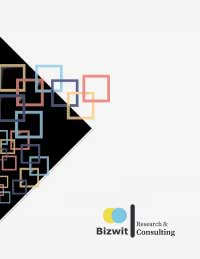Global Cloning and Mutagenesis Market is valued at approximately USD 2.00 billion in 2021 and is anticipated to grow with a healthy growth rate of more than 18.7% over the forecast period 2022-2029. Cloning is the process of creating naturally occurring or artificially produced, genetically identical copies of an organism. Mutagenesis is the process through which an organism’s genetic composition is altered, leading to a mutation. In a laboratory context, mutagenesis is carried out when DNA is intentionally modified to produce mutant proteins, genes, or strains of an organism. Cloning and mutagenesis are two of the most effective methods created to research the links between protein structure and function. They are used to confirm the effects of mutations both in vitro and in vivo. Due to the growing use of cloning in numerous genetic applications, such as reproductive cloning, the global cloning and mutagenesis industry is expected to rise. The prevalence of hereditary and chronic diseases is expected to increase, as is the demand for personalized medicine. Due to growing financing for research and development targeted at curing genetic issues and other diseases, such as cancer and HIV, cloning and mutagenesis technologies are becoming more and more necessary.
The primary factors driving the global market are the rise in the prevalence of hereditary and chronic diseases, the rise in demand for personalized medicine, and the rise in new companies entering the industry. The industry’s expansion is further aided by favorable funding conditions for gene synthesis and cloning services, technological advancements in the cloning industry, and an increase in commercial activities that work together well. Innovative, effective DNA and gene cloning services are being developed by top industry players. According to statista, nearly 17.9 million people worldwide passed away in 2019 as a result of cardiovascular disorders of all kinds. The number of deaths worldwide in 2019 attributable to a few chronic diseases is shown in this data. Chronic illness has negative effects on people’s quality of life and lifespan, as well as on society and governments around the world. An enhancement in research and development can open up many opportunities. However, the side effects of cloning and mutation are restricting the market growth over the forecast period of 2022-2029.
The key regions considered for the Global Cloning and Mutagenesis Market study include Asia Pacific, North America, Europe, Latin America, and Rest of the World. North America dominated the market in terms of revenue, additionally, Cloning and mutagenesis methods are now used more frequently in the region as platforms built on genomic and proteomic data become more widely accepted. Greater product penetration in the region is due to the presence of top inventors and market players. In May 2021, Telesis Bio, Inc., a U.S. company, announced, for instance, that its BioXp technology now offers lengthy fragment cloning. With the help of this project, researchers may overnight hand-free clone into custom vectors and produce multivariant, error-corrected vectors.
Major market players included in this report are:
Agilent Technologies, Inc.
Thermo Fisher Scientific, Inc.
New England Biolabs Inc.
Takara Bio Inc.
Merck KGaA
Promega Corporation
Bio-Rad Laboratories, Inc.
Danaher Corporation
Jena Bioscience GmbH
Assay Genie
Recent Developments in the Market:
? In May 2021, the American company Telesis Bio, Inc. announced long fragment cloning is now supported by its BioXp technology. This project enables researchers to build multivariant, error-corrected vectors and hand-free overnight clone them into custom vectors.
? In June 2019, The Human Glycome Project, a global endeavour to map the composition and function of human glycans, was announced by NEB, Waters, and Genos as a collaboration. To help with better sample preparation and process throughput, NEB will provide a variant of their Rapid PNGase F technology. In order to give its consumers access to illustrations of how its products are used in actual situations, NEB partnered with the artificial intelligence technology firm Bioz, Inc. in the same month.
Global Cloning and Mutagenesis Market Report Scope:
Historical Data 2019-2020-2021
Base Year for Estimation 2021
Forecast period 2022-2029
Report Coverage Revenue forecast, Company Ranking, Competitive Landscape, Growth factors, and Trends
Segments Covered Product, Technology, End User, Region
Regional Scope North America; Europe; Asia Pacific; Latin America; Rest of the World
Customization Scope Free report customization (equivalent up to 8 analyst’s working hours) with purchase. Addition or alteration to country, regional & segment scope*
The objective of the study is to define market sizes of different segments & countries in recent years and to forecast the values to the coming years. The report is designed to incorporate both qualitative and quantitative aspects of the industry within countries involved in the study.
The report also caters detailed information about the crucial aspects such as driving factors & challenges which will define the future growth of the market. Additionally, it also incorporates potential opportunities in micro markets for stakeholders to invest along with the detailed analysis of competitive landscape and product offerings of key players. The detailed segments and sub-segment of the market are explained below:
By Product:
Cloning Kits
Mutagenesis Kits
By Technology:
Topo PCR Cloning
Blunt End Cloning
Seamless Cloning
Site-directed Mutagenesis
Others
By End User:
Biopharmaceutical & Pharmaceutical Companies
CROs & CMOs
Academic & Research Institutes
By Region:
North America
U.S.
Canada
Europe
UK
Germany
France
Spain
Italy
ROE
Asia Pacific
China
India
Japan
Australia
South Korea
RoAPAC
Latin America
Brazil
Mexico
ROLA
Rest of the World



